Exploring the ‘Ugly’ and ‘Embarrassing’: The Sensorial Textiles of Josh Faught
San Francisco based fibre artist Josh Faught makes visceral, tactile artworks that weave together multiple references: craft, sexuality, gender and queer politics. Working with weaving, knitting and crochet, his widely varied practice is almost always sculptural, whether hung onto the wall or strewn across wooden supports. While embracing traditional craft techniques, Faught also pushes his art into challenging and sometimes uncomfortable territory, allowing himself to explore what he calls the ‘ugly and ‘embarrassing,’ terms one wouldn’t normally associate with the decorative arts, yet that makes his art all the more appealing and prescient.
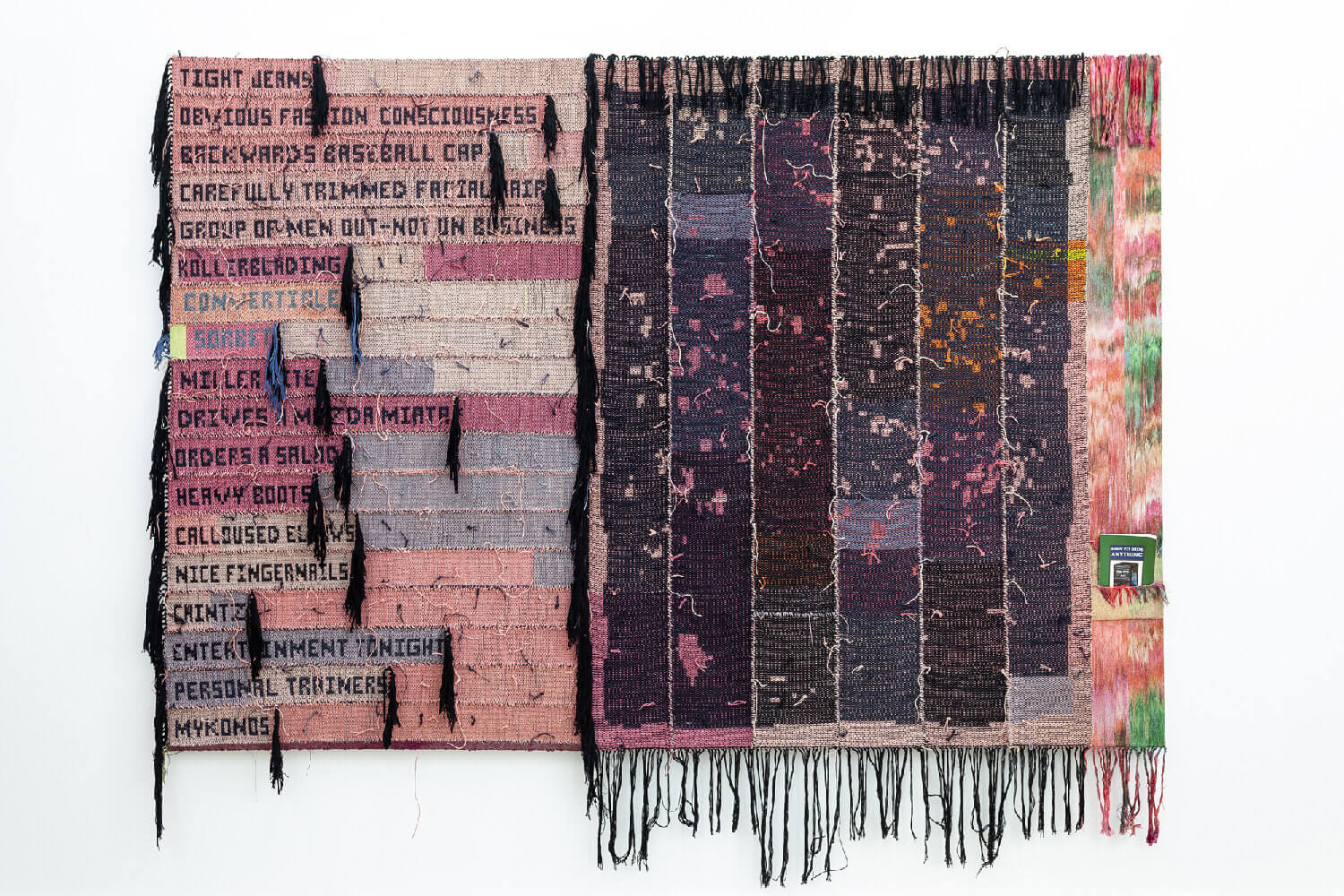
The Risks of Overexposure, 2019. Hand dyed, hand woven hemp, cotton, and gold lamé; abstraction appropriated from a crowd photographed at Bette Midler’s Divine Miss M tour; How to Hide Anything (paperback) on stretched linen
Faught was born in 1979 in St Louis. He cites one particular museum experience as a definitive moment in his artistic career, explaining, “The strongest memory I have of seeing art in a museum space was probably when I was in High School or Junior High and I went to the Tate in London. I saw this incredible exhibition of Mark Rothko’s paintings. And it was the first time I felt truly emotional in front of a work.” Responding to life with an emotional language would later become a cornerstone of his practice.
Faught studied at the School of the Art Institute of Chicago, and he began working in textiles early in his career. References to the history of textiles as a politically ardent means of expression are evident in both his early, and more recent work, which he is quick to acknowledge, noting, “When I first started making work in textiles, I was highly influenced by the Art Fabric Movement of the 1960s and 1970s as well as the Pattern and Decoration movement. I still am. These artists were thinking about textiles as surrogates for political activity or a political spirit.”
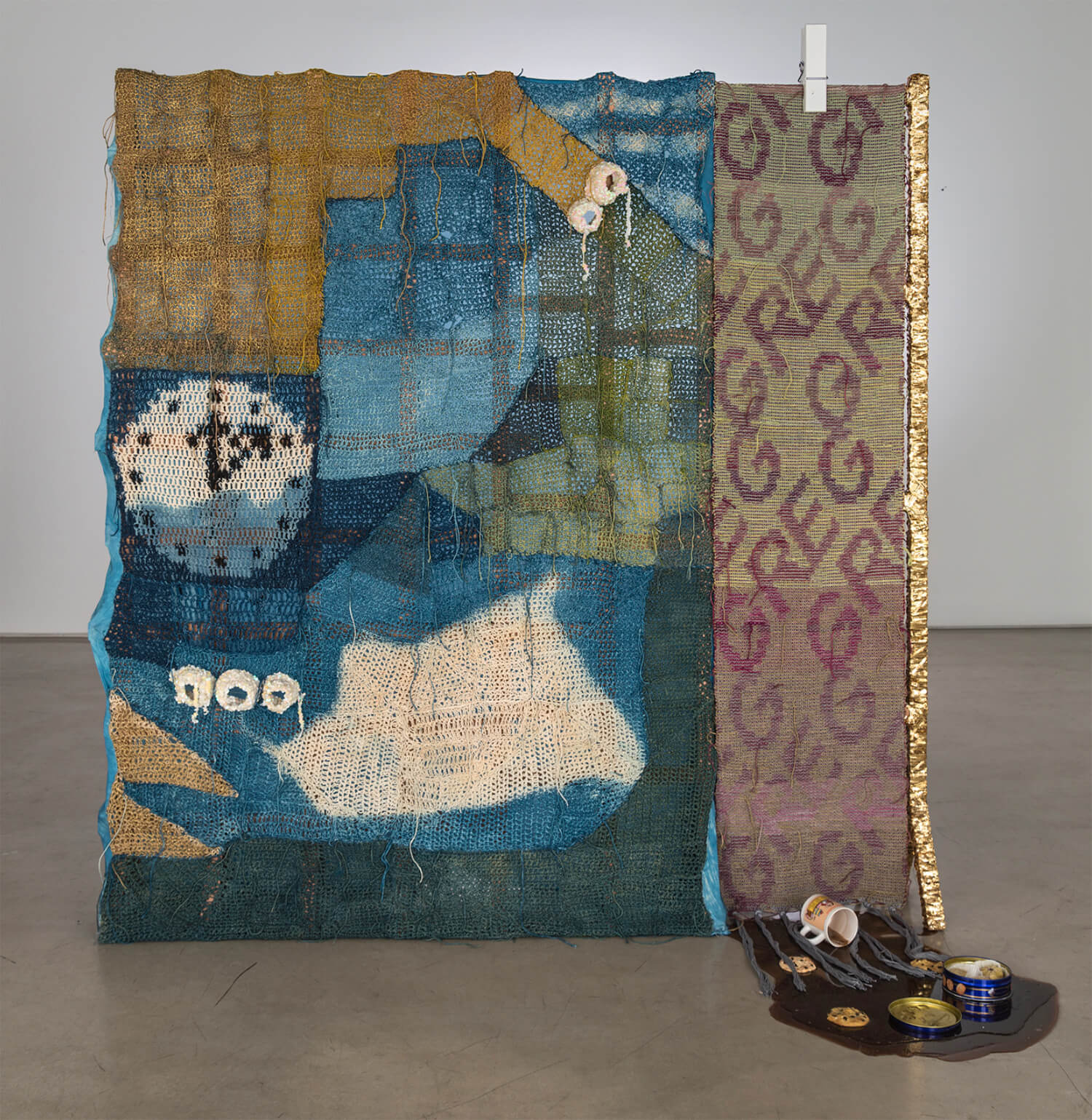
Greg, 2014. Hand woven and crocheted hemp (hand dyed in colors to match the 2013/2014 color forecast, Indigo, gold spray paint, sequin trim, silk, wool, giant clothes pin, spill (resin) with Cathy mug, chocolate chip cookies (plastic), and tin of butter cookies (plastic and metal) on Cedar support.
Faught came out to his family when the AIDS epidemic was still rife, and he admits it was a deeply problematic time to be queer, when life as a gay man was shrouded by what he called “the spectre of death.” Much of Faught’s art is often layered with both subtle and direct references to queerness, both in a historical, and contemporary, context. He acknowledges the rich complexity of gay culture in a variety of ways throughout his practice, sometimes coy and secretive with hidden messages interwoven into the core of his fabric, other times darkly humorous with found objects or newspaper slogans, or celebratory, with allusions to personal anecdotes and positive stories.
Faught works across media, but his process is ultimately reliant on the hand-made – he deliberately works with hand-dyed fibres and found fabrics, weaving, stitching and knitting together complex artworks that show the time and dedication invested into each one. But his relationship to aesthetics is a tricky one – in avoiding the overtly decorative, Faught instead leans towards the awkward and challenging, explaining a desire to create something deliberately ‘ugly’ for its ability to stir up an emotional response in the viewer. He says, “I always think that I’m not ready to let a work leave my studio until I’m embarrassed by it. That’s when it’s ready to go.”
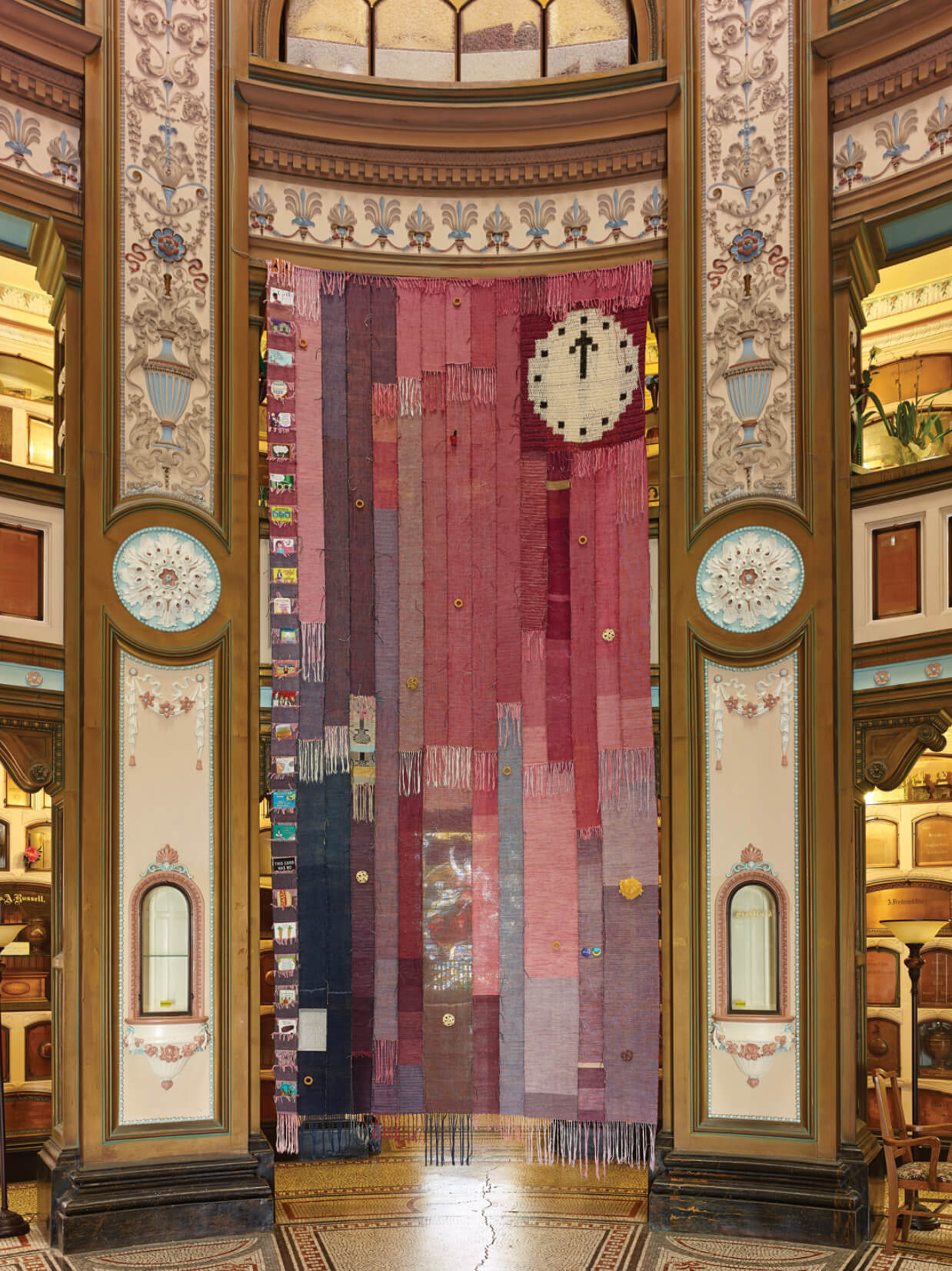
Untitled (I), from BE BOLD For What You Stand For, BE CAREFUL For What you Fall For, 2013. Site specific installation at the Neptune Society Columbarium, San Francisco
In recent years Faught’s career has gone from strength to strength, leading to a series of major solo exhibitions and his work appearing in museum collections including the San Francisco Museum of Modern Art and the Institute of Contemporary Arts, Boston. His success is arguably down to a refreshingly honest and direct approach towards aesthetics, which sits at odds with a culture that can be so obsessed with perfection. Instead, Faught explains that he is predominantly driven by a desire for people to become immersed in the expressive physicality of his objects, observing, “Part of my strategy as an artist is to try and make work that doesn’t look great on Instagram because I really believe in the importance of visiting an artwork and experiencing it in real life and having a bodily relationship with an object.”





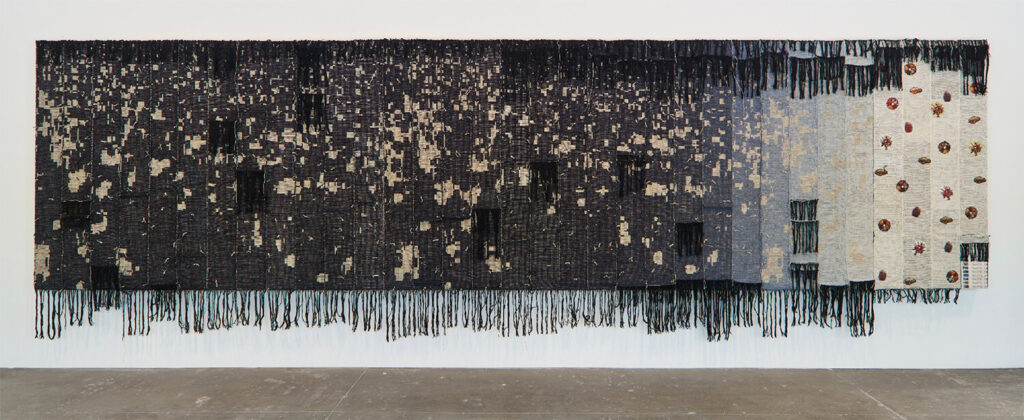
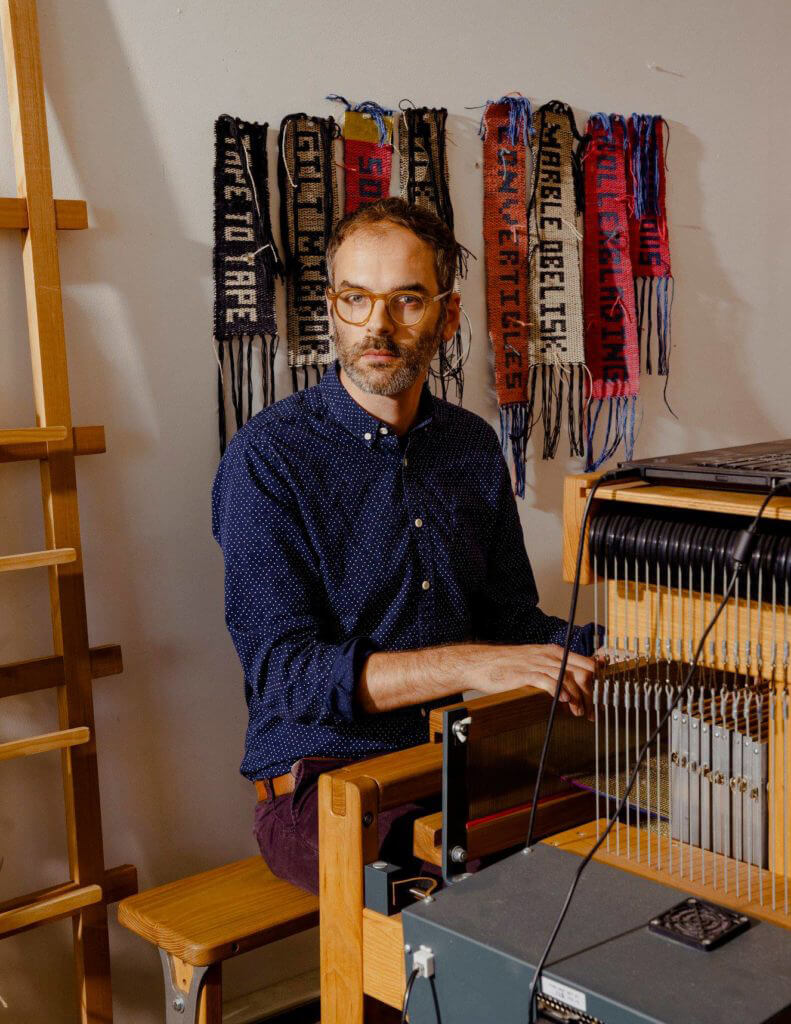


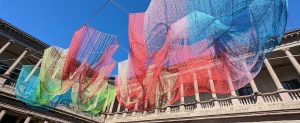
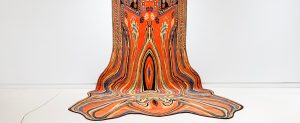
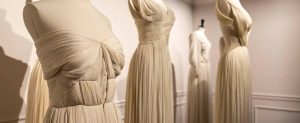













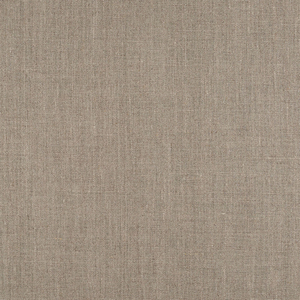

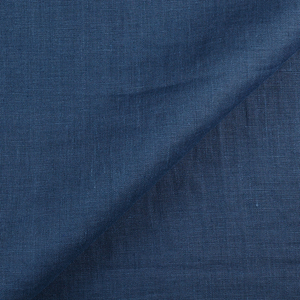




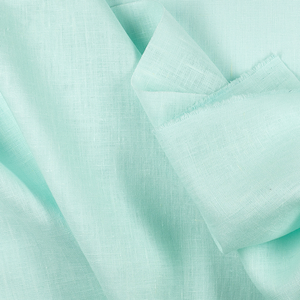

















One Comment
Cassandra Tondro
Fabulous! Thank you so much for sharing Josh’s stunning work and for your thoughtful commentary.